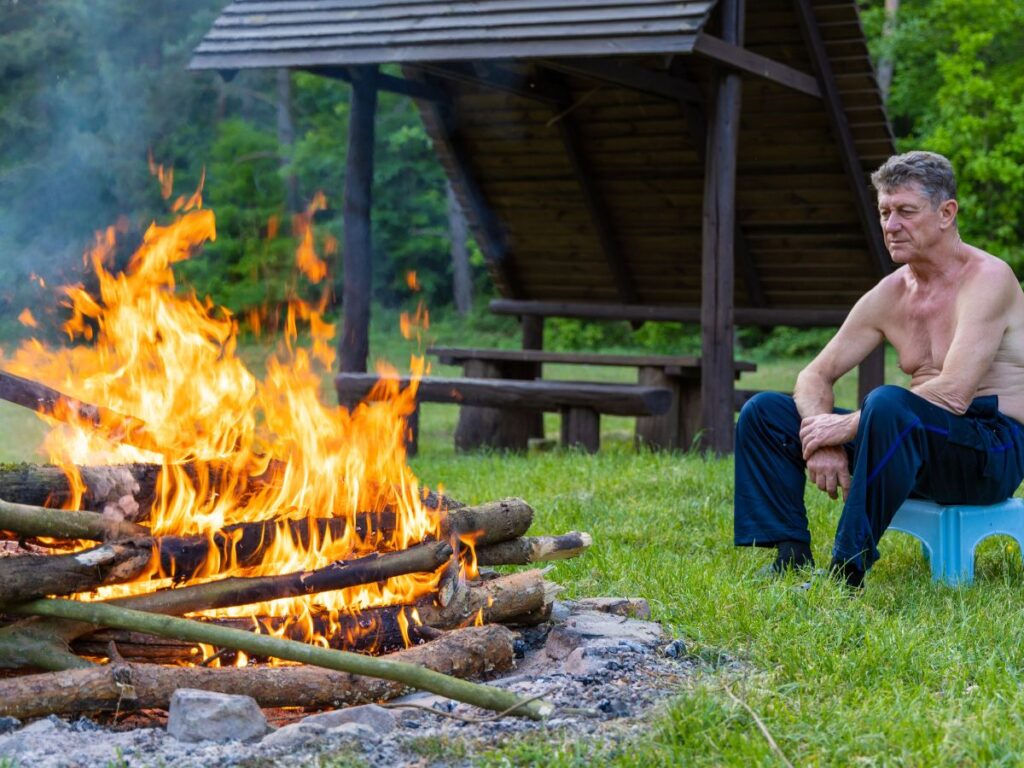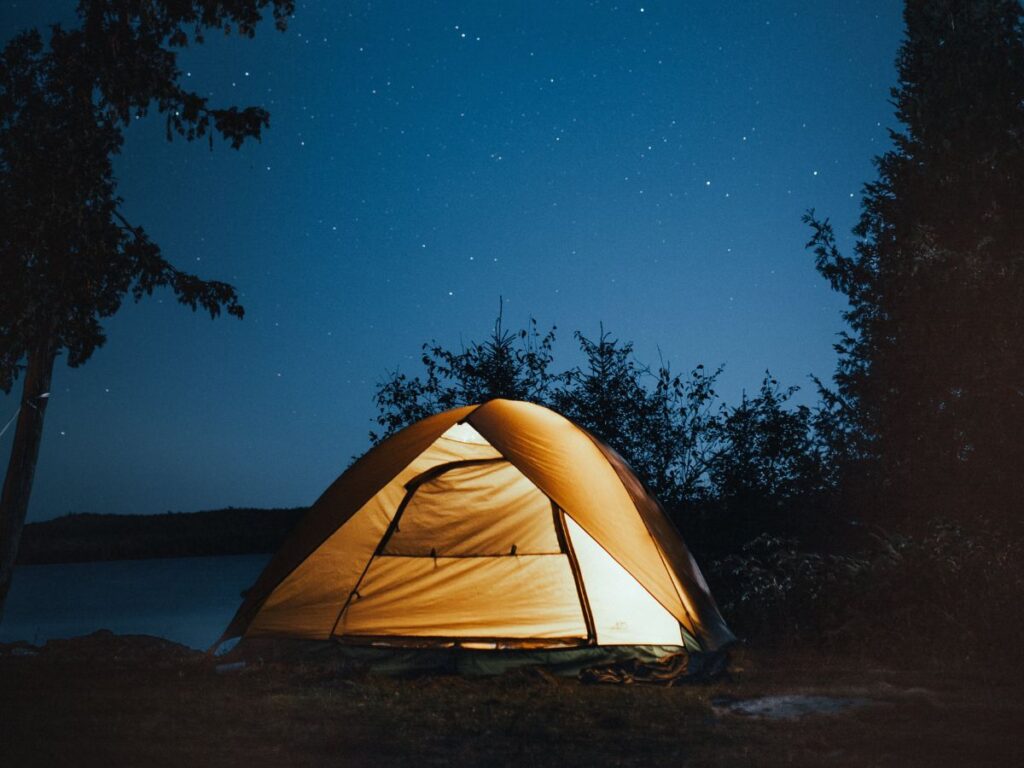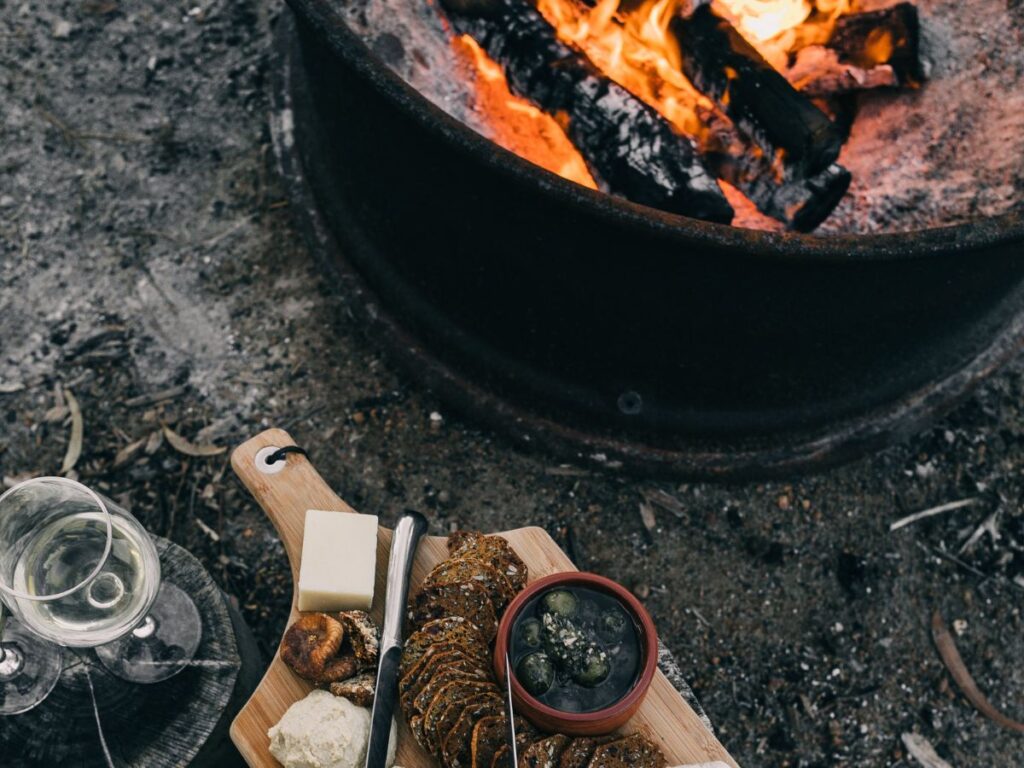Welcome, outdoor enthusiasts, to our comprehensive guide on camping in the extraordinary Yosemite National Park. Stretching across 1,200 square miles of natural beauty—from towering cliffs to serene meadows—Yosemite is a camper’s paradise. Whether you’re a seasoned camper or a family on an adventure, we’re here to help you uncover the ideal camping spot in this majestic wilderness. This guide not only explores the best campgrounds but also offers unique Yosemite-specific camping tips and advice to secure your perfect site. So, gather your camping gear and let’s embark on this exciting journey—you’re just a campfire away from an unforgettable Yosemite experience!
Top Campgrounds in Yosemite National Park
In the following table, we delve into some of Yosemite’s unique camping experiences, each with its own specific amenities, rules, and requirements, including pet policies.
| Name of Camping Site | Location in Yosemite Park | Toilets | Group Camping | RV Access | Pet Friendly |
| Upper Pines | Yosemite Valley | Yes | No | Yes | Yes |
| Lower Pines | Yosemite Valley | Yes | No | Yes | Yes |
| North Pines | Yosemite Valley | Yes | No | Yes | Yes |
| Camp 4 | Yosemite Valley | Yes | Yes | No | No |
| Crane Flat | Crane Flat area | Yes | Yes | Yes | Yes |
| Tuolumne Meadows | Tuolumne Meadows area | Yes | Yes | Yes | Yes |
| White Wolf | Tioga Road area | Yes | No | Yes | Yes |
| Hodgdon Meadow | Big Oak Flat area | Yes | Yes | Yes | Yes |
| Bridalveil Creek | Glacier Point Road area | Yes | Yes | Yes | Yes |
| Porcupine Flat | Tioga Road area | Yes | No | Yes | Yes |
| Tamarack Flat | Tioga Road area | Yes | No | No | Yes |
| Wawona | Wawona area | Yes | Yes | Yes | Yes |
| Yosemite Creek | Tioga Road area | Yes | No | No | Yes |
| Glacier Point Ski Hut | Glacier Point Road | Yes | No | No | No |
| High Sierra Camps | Along High Sierra Loop trail | Yes | No | No | No |
| Little Yosemite Valley | Yosemite Valley (Wilderness) | Yes | No | No | No |
| Wildcat and Backpacker’s Camp (Tuolumne Meadows) | Tuolumne Meadows | Yes | No | No | No |
| Wilderness Camping in Yosemite | Yosemite Wilderness | No | No | No | No |
Many grounds for camping in Yosemite National Park welcome pets, but remember leash laws and pet-free zones. Amenities and rules vary by site. For unique camping experiences like Glacier Point Ski Hut and High Sierra Camps, or wilderness camping, specific permits and guidelines apply.
In the following section, we’ll explore top Yosemite National Park camping sites like Tuolumne Meadows, White Wolf, Hodgdon Meadow, and Yosemite Valley’s renowned spots, revealing their features, services, and open seasons.

Upper Pines
Situated in the heart of the Yosemite Valley, Upper Pines is the largest campground, ensconced amongst pines. With amenities like flush toilets, drinking water, food lockers, and a dump station, you’ll have a comfortable stay while immersing yourself in nature’s beauty.
Open Season: All Year
Features: Offers stunning views of Half Dome and El Capitan, trails right from the campground lead to Mirror Lake, Yosemite Falls, and other attractions.
Lower Pines
There are numerous areas where you can do camping inside Yosemite national park. Lower Pines has spots for camping at Yosemite National Park for those who want peace and quiet. It is a smaller, quieter campground, positioned along the Merced River. Facilities include flush toilets, drinking water, food lockers, and a dump station, providing a relaxed environment for your river-side camping.
Open Season: April – October
Features: Spectacular views of Half Dome, Yosemite Falls, and Glacier Point can be seen right from your tent.
North Pines
Located at the eastern end of Yosemite Valley, North Pines is a serene, shaded campground surrounded by towering pine and cedar trees. The campground features facilities like flush toilets, drinking water, food lockers, and a dump station.
Open Season: April – September
Features: Offers a peaceful camping experience near the Merced River, with easy access to nearby hiking trails.
Camp 4
If you are camping at Yosemite National Park do check out Camp 4 which is renowned as a hub for rock climbers. Camp 4 is a historic site offering shared picnic tables and fire rings, drinking water, and flush toilets. This campground stands out with its communal atmosphere and a walk-in only policy.
Open Season: All year
Features: Unique for its communal atmosphere and walk-in only policy. Also, it is in close proximity to Yosemite Falls.
Wawona
Wawona is a tranquil campground located on the southern edge of the park, not far from the Mariposa Grove of Giant Sequoias. It provides flush toilets, drinking water, food lockers, and a dump station, ensuring a comfortable camping experience.
Open Season: All year
Features: Nearby attractions include the Pioneer Yosemite History Center and the start of the Chilnualna Falls trail.

Bridalveil Creek Campground
Nestled in a forest of red fir and lodgepole pine, Bridalveil Creek Campground provides drinking water, flush toilets, and food lockers. Its higher elevation location offers a respite from the summer heat and a more relaxed camping experience.
Open Season: July – early September (weather permitting)
Features: Ideal for those seeking to explore Glacier Point Road and nearby hiking trails.
Hodgdon Meadow
Hodgdon Meadow is situated near the Big Oak Flat Entrance Station and offers a quieter camping experience away from the crowds. The campground provides amenities like drinking water, flush toilets, and food lockers.
Open Season: All year
Features: Nearby trails lead to Hodgdon Meadow and the Tuolumne Grove of Giant Sequoias.
Tuolumne Meadows
Tuolumne Meadows is a high-country campground situated at an elevation of 8,600 feet, providing a cooler camping experience. It offers amenities such as drinking water, flush toilets, food lockers, and a dump station.
Open Season: July – late September (weather permitting)
Features: Proximity to the Tuolumne River, access to extensive hiking trails, and close to Tioga Road.
Crane Flat Campground
Crane Flat Campground serves as a gateway to the park’s high country and offers drinking water, flush toilets, food lockers, and a dump station. It is an ideal choice for those looking to explore Yosemite’s wilderness areas.
Open Season: July – October (weather permitting)
Features: Crane Flat lookout and fire tower, access to trailheads, and proximity to the Merced and Tuolumne Groves of Giant Sequoias.
White Wolf Campground
White Wolf, located off Tioga Road, provides a more remote camping experience amid wildflowers. Despite its remote location, it provides necessary amenities such as drinking water, flush toilets, and food lockers.
Open Season: July – early September (weather permitting)
Features: Close to the White Wolf Lodge and trailheads leading to Lukens and Harden Lakes.

Tamarack Flat Campground
Tamarack Flat Campground offers a more rustic camping experience located off the beaten path along the Old Big Oak Flat Road. It’s equipped with vault toilets, and water is available from a local creek, although boiling or treating the water is necessary before use.
Open Season: July – October (weather permitting)
Features: Close to the Tuolumne and Merced Sequoia Groves and some spectacular lookouts.
Yosemite Creek Campground
Yosemite Creek Campground, situated off Tioga Road, provides a serene and rustic camping experience. It’s equipped with vault toilets, and water is sourced directly from Yosemite Creek, requiring boiling or treatment before drinking.
Open Season: July – early September (weather permitting)
Features: Campsites are located along Yosemite Creek, with access to Yosemite Creek trail leading to Yosemite Valley.
Porcupine Flat Campground
Porcupine Flat Campground, another remote campsite off Tioga Road, offers tranquil camping with easy access to surrounding trails. The campsite is equipped with vault toilets, and water is sourced from a nearby creek, which must be boiled or treated before use.
Open Season: July – October (weather permitting)
Features: Close to various trailheads leading to North Dome, Indian Rock, and Yosemite Valley.
Glacier Point Ski Hut (winter only)
For those seeking a unique winter camping experience, the Glacier Point Ski Hut offers a destination for cross-country skiers. Equipped with bunk beds, a community kitchen, a wood stove, and composting toilets, it provides a rustic experience with breathtaking views. Visitors must bring their own food and cooking supplies.
Open Season: December – March (weather permitting)
Features: Located at Glacier Point, it offers breathtaking views of Half Dome, Yosemite Falls, and Yosemite’s high country.
High Sierra Camps
The High Sierra Camps are a series of 5 camps located along a loop trail in Yosemite’s high country. They offer tent cabins, meals, and horsepacking services, providing a relatively comfortable camping experience in remote locations.
Open Season: June – September (weather permitting)
Features: Each camp is approximately 5.7 to 10 miles apart, situated along a beautiful loop trail, making them an excellent option for multi-day hikes.

Little Yosemite Valley
A backpacker’s campground accessible only by foot or horse, Little Yosemite Valley offers pit toilets and bear lockers for a true wilderness experience. All food and water must be carried in, with water from the nearby Merced River needing to be treated before drinking.
Open Season: All year (weather permitting), but a wilderness permit is required.
Features: Provides access to Half Dome and the backcountry beyond, near Merced River.
Wildcat and Backpacker’s Camp (Tuolumne Meadows)
These sites are exclusively available for those with wilderness permits for the night before or after a backcountry trip. Offering pit toilets and food storage lockers, they provide a simple and comfortable base for backpackers.
Open Season: July – September (weather permitting)
Features: A base for backpackers preparing for or returning from their wilderness hikes.
Wilderness Camping in Yosemite
Yosemite’s wilderness areas cover over 94% of the park and allow for dispersed camping away from the more populated campgrounds. This camping is accessible only by foot or horse and requires a wilderness permit.
Open Season: All year, but a wilderness permit is required, and conditions vary greatly by season
Features: Wilderness camping provides a remote and serene camping experience, often with no one else in sight. Locations vary greatly based on hiking route.
Services: No services are provided; all food, water, and necessary items must be carried in and out.
Yosemite National Park Camping Options
Yosemite National Park, a haven for nature lovers, offers a diverse range of camping accommodations. Whether you’re looking for the rugged feel of tent camping or the cozy comfort of cabins, there’s something for every type of camper. Here are some key aspects to consider:
Yosemite National Park Camping Cabins: For those who want a bit more comfort while still being enveloped by nature, Yosemite offers camping cabins. These cabins vary in amenities, with some offering basic shelter, while others may have heating, beds, and basic kitchen facilities. Popular areas with cabins include Curry Village (also known as Half Dome Village) and Evergreen Lodge. It’s recommended to book well in advance, especially during peak seasons.
Yosemite National Park Camping in Tent: Tent camping is a quintessential way to experience Yosemite. There are 13 campgrounds within Yosemite that accommodate tents. Some campgrounds, like Camp 4, are on a first-come, first-served basis, while others, such as Upper Pines, require reservations. Always check the specific requirements and amenities of each campground, as some sites may have bear lockers, potable water, and restrooms.

Camping Tips in Yosemite National Park
While Yosemite offers a plethora of experiences to all its visitors, there are several things to bear in mind to make your camping experience safe, enjoyable, and respectful to nature.
Yosemite’s climate varies greatly, so it’s essential to pack for all types of weather. Include lightweight clothing for warm days, layers for chilly nights, and rain gear for unexpected showers. Don’t forget sunblock and a sun hat to protect you from high altitude sun exposure.
Ensuring safety in bear country is crucial while camping in Yosemite. Use the bear-proof food lockers provided at all Yosemite campgrounds to store your food and scented items when you’re not using them, both day and night. Dispose of garbage immediately in bear-proof dumpsters. Do not leave trash or food scraps around your campsite. Bears are more active during nighttime hours, and cooking earlier can help prevent attracting them. Keep your camping and cooking areas clean. When out exploring, stay in groups and make noise to avoid surprising a bear. If you spot a bear, keep your distance (at least 50 yards) and never approach it.
Fire regulations in Yosemite are strictly enforced. Only have fires in designated fire rings, and always check if there are active fire restrictions due to weather conditions. If you’re camping or hiking in the high country, prepare for altitude sickness by staying well hydrated, moving at a slow pace, and sleeping at a lower elevation if you can.
Bring insect repellent, and consider packing light-colored clothing, as mosquitoes are attracted to dark colors. Pack a star chart or download a stargazing app to help identify different celestial bodies. Always check the trail conditions before you leave, as weather can change rapidly, and some trails might be closed. Carry a map, compass, and plenty of water.
Follow the Leave No Trace principles to keep it pristine. This includes packing out all your trash, staying on designated trails, and not taking any natural objects with you.
Yosemite National Park Camping Reservations Tips
With its stunning landscapes, it’s no surprise that Yosemite’s campgrounds fill up quickly. To help you secure the perfect spot, here are some strategies:
- Most Yosemite campgrounds operate on a reservation system, and sites can be booked up to five months in advance on the 15th of each month at 7:00 AM Pacific Time.
- Yosemite’s beauty shines year-round, but summer is the busiest season.
- Yosemite has several first-come, first-served campgrounds, including Camp 4, Tuolumne Meadows (part of the sites), and all of the High Sierra Camps.
- Sometimes, campers cancel their reservations, providing last-minute opportunities. Regularly check the reservation system for these unexpected openings. Just remember, these are subject to availability and require swift action.
- Some campgrounds like North Pines, Upper Pines, and Lower Pines are accessible by Yosemite’s free shuttle service, meaning you could park your car at available parking areas and take the shuttle to your campground.
- If all else fails, or if you prefer a less crowded setting, consider camping on the nearby National Forest Service Land.

Things to Keep In Mind While Planning Camping in Yosemite National Park
When considering a camping expedition to Yosemite National Park, there are several vital aspects to keep in mind:
Camping Near Yosemite National Park: For those who don’t wish to camp within the park or are looking for alternatives due to site availability, there are several campgrounds and RV parks situated near Yosemite. These offer convenient access to the park and can sometimes provide amenities not found within Yosemite.
Best RV Camping in Yosemite National Park: Yosemite offers several campgrounds that can accommodate RVs. Among the most popular are the Yosemite Valley’s Upper Pines, Lower Pines, and North Pines campgrounds. However, always check the maximum RV lengths and restrictions, as not all sites can accommodate larger vehicles.
Yosemite National Park RV Camping Reservations: Due to the high demand, it’s crucial to reserve your RV camping spot in advance. Reservations can be made through Recreation.gov. Some campgrounds are first-come, first-served, but given Yosemite’s popularity, relying solely on this can be risky during peak seasons.
Winter Camping in Yosemite National Park: Yosemite’s beauty is undeniable during the winter months. For those seeking the serene beauty of a snowy Yosemite, the park offers winter camping options. Camp 4 in Yosemite Valley is open year-round, and the Badger Pass Ski Area provides access to the Glacier Point Ski Hut for those on winter wilderness trips. Do prepare for cold temperatures and snow, and always check the park’s official website or contact the park for winter road conditions and any necessary tire chain requirements.
Conclusion
Camping in Yosemite National Park can be a transformative experience. In this guide, we’ve journeyed through Yosemite’s scenic splendor, exploring an array of campgrounds to suit every adventurer. From idyllic family spots to serene backcountry sites, we’ve shared practical tips for a memorable camping experience and essential guidance on securing your ideal site. Remember, every campsite in Yosemite offers a unique encounter with nature, promising unforgettable memories. As you gear up for your adventure, refer back to this guide as your compass. Now, all that’s left is for you to light that campfire and start creating those Yosemite memories. Happy camping!
FAQs
1. What are the top campgrounds in Yosemite?
Top campgrounds include Yosemite Valley’s Upper Pines, Lower Pines, North Pines, and Camp 4, Tuolumne Meadows, White Wolf, Hodgdon Meadow, Crane Flat, and Wawona.
2. When is Yosemite’s camping season?
The camping season varies by campground, with some like Upper Pines open year-round, and others like Tuolumne Meadows typically open from July through September.
3. Which Yosemite campgrounds allow pets?
Most campgrounds, including Upper Pines and Wawona, allow pets, but they must be leashed and are not allowed on trails.
4. Is RV camping available at Yosemite?
Yes, many campgrounds like Upper Pines, Lower Pines, and Hodgdon Meadow accommodate RVs, but it’s important to check the maximum RV length for each campground.
5. Are there walk-in campgrounds in Yosemite?
Yes, Camp 4 in Yosemite national park in Yosemite Valley is a walk-in campground, and wilderness camping is available for backpackers with the appropriate permit.
6. Are there bear-safe food storage boxes at all campsites?
Yes, all established campgrounds in Yosemite provide bear-safe food storage boxes.
7. When is the easiest time to find a camping spot in Yosemite?
Off-peak times like late spring and early fall usually have more availability, but it’s best to book as early as possible due to high demand.
8. How early can I book a Yosemite campsite?
Most campsites can be booked up to five months in advance on the 15th of each month at 7:00 AM Pacific Time.
9. Where to buy firewood for camping outside Yosemite National Park?
It’s best to purchase firewood from local vendors near the park entrance to prevent the spread of pests.
10. What are the different Yosemite National Park camping grounds?
Yosemite offers various campgrounds including Upper Pines, Lower Pines, Camp 4, Tuolumne Meadows, and White Wolf, among others.
11. Can you camp in Yosemite National Park?
Yes, camping is permitted in designated campgrounds within Yosemite National Park.
12. How far is Angels Camp from Yosemite National Park?
Angels Camp is approximately 70 miles or about a 1.5 to 2-hour drive from the Big Oak Flat Entrance of Yosemite National Park.
13. Where to camp at Yosemite National Park?
Popular choices include campgrounds in Yosemite Valley like Upper Pines and Camp 4, as well as others such as Hodgdon Meadow and Crane Flat.
14. Where to book for camping in Yosemite National Park?
Reservations for camping in Yosemite National Park can be made through the National Recreation Reservation System at Recreation.gov.
Extra Scoop For You!
- Official Website of Yosemite National Park: https://yosemite.org/
- Contact: 209/372-0200
For those of you who are intrigued about climbing, we have some extra reading material recommendations for you. Discover the enchanting world of climbing with these popular books:
- “Wilderness Adventure Camp” by Frank Grindrod
- “Outdoor Survival” by Charles Hunter
- “Denali National Park Alaska: Guide to Hiking, Photography and Camping” by Ike Waits
